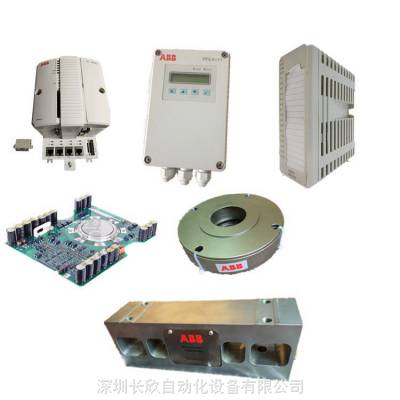

DCS Distributed Control System:
FOXBORO: I / A Series System: FBM (Field Input / Output Module) Sequence Control, Ladder Logic Control, Incident Recall Processing, D / A Conversion, I / O Signal Processing, Data Communication and Processing.
TRICONEX: Redundant Fault-Tolerant Control System, the most modern fault-tolerant controller based on Triple Modular Redundancy (TMR) architecture.
Westinghouse (Westinghouse): OVATION system, WDPF system spare parts.
Siemens: MOORE system spare parts.
Honeywell: TDC Series, QCS Series, S9000 Series Spare Parts.
ABB: ADVANT OCS, MOD30, MO300, Bailey INFI90, Masterview 850, AC460, S100, S800 system spare parts.
MOTOROLA (MOTOROLA): MVME147 / 162/166/167/172/177/187 Spare Parts.
XYCOM: VME series bus board, programmable human-machine interface.
PLC programmable controller:
Allen-Bradley (Rockwell): 1756/1771/1785 series, Reliance Ryan.
Schneider: Modicon Quantum 140 processor, I / O modules, power modules, and more.
Siemens: S5 / S7 Series 200, 300, 400; 6AV / 6GK Series spare parts.
Servo control system:FANUC (Fanuc): servo amplifier A06B, drive A06B, input and output modules A02B / A03B, PCB A16B / A20B.
Siemens: 6SN / 6FC / 6FX series, offering sales of CNC systems (810, 802D SL, 810D, 840D) and spare parts.
Yaskawa (Yasukawa): servo controller, servo motor, servo drive.
ABB Robots, FANUC Robots, YASKAWA Robots, KUKA Robots, Mitsubishi Robots, OTC Robots, Panasonic Robots, MOTOMA

The Industrial IoT edge is now recognized as a critical enabler of digital transformation strategies.The Industrial IoT edge continues to evolve in response to the escalating demands of data-driven digital transformation strategies.Compute-centric thick edge devices are evolving in different directions relative to network-centric thin edge components.Edge-to-cloud integration and edge compute remain largely the domain of thick edge devices, which are defined by their greater compute and store capabilities.IT/OT convergence, particularly the integration of automated control, centralized management and security, are most prominent at the network-centric thin edge.The thin edge remains a dynamic environment in terms of both current and emerging network alternatives and ongoing introduction of new technologies and standards.Customers pursuing digitally enabled business improvement strategies understand the need for deeper and more extensive connectivity throughout the enterprise. Cloud-based solutions for analytics, machine learning, new service-oriented revenue streams, and other applications need data from assets, processes, personnel, and automation and control equipment resident at the edge to generate meaningful business value. This reality has led to widespread industry recognition of the importance of the edge in achieving desired business outcomes.Edge capabilities are necessary to enable the full spectrum of connected products, processes, and services and provide rapid time-to-value. Edge functionality is relied on for important tasks such as reducing response latency when sending data to the cloud and insulating clouds from the “data deluge” driven by the ever-increasing volume of data available in edge devices. Edge devices play a critical role in supporting the OT environment by providing integration with, and insulation from, higher levels of the architecture. This is manifested in ways such as support for northbound and southbound connectivity and OT-friendly visualization and security.The industrial network infrastructure portion of the Industrial IoT edge is the flashpoint for delivery and, increasingly, conversion of data and information between physical assets and processes to digital transformation applications. Ongoing improvements in network performance, fueled by both standardization and innovation, along with an escalated emphasis on integrated operational security, are furthering the dynamic nature of this tier of the architecture.

.
 品质至上3BSE023160R1诚信服务 细节与服务完善 欢迎咨询来电
¥1500.00
品质至上3BSE023160R1诚信服务 细节与服务完善 欢迎咨询来电
¥1500.00
 品质至上3BSE004203R1诚信服务 细节与服务完善 欢迎咨询来电
¥1500.00
品质至上3BSE004203R1诚信服务 细节与服务完善 欢迎咨询来电
¥1500.00
 3BSE004217R1安全系统模块ABB系列工控自动化库存进口备件
¥1500.00
3BSE004217R1安全系统模块ABB系列工控自动化库存进口备件
¥1500.00
 3BSE023161R1机器人备件等各类工控张力传感器供应
¥1500.00
3BSE023161R1机器人备件等各类工控张力传感器供应
¥1500.00
 信誉至上3BSE007913R11张力控制器自动化工控备件库存
¥1500.00
信誉至上3BSE007913R11张力控制器自动化工控备件库存
¥1500.00
 信誉至上3BSE007913R20张力控制器自动化工控备件库存
¥1500.00
信誉至上3BSE007913R20张力控制器自动化工控备件库存
¥1500.00




